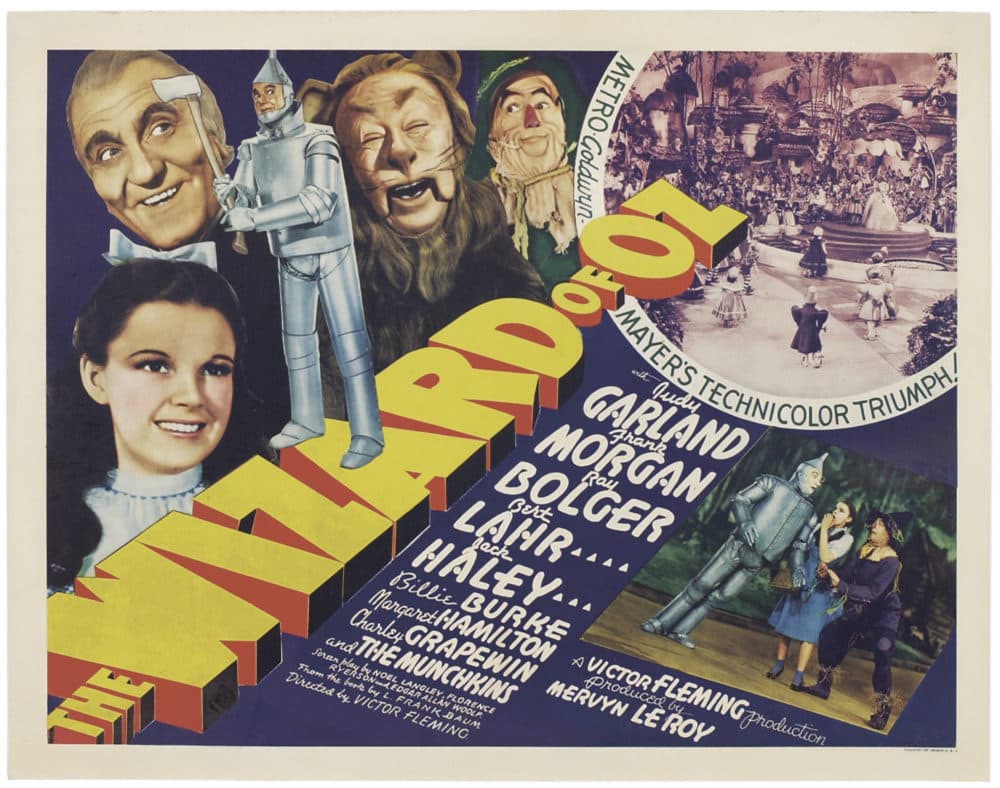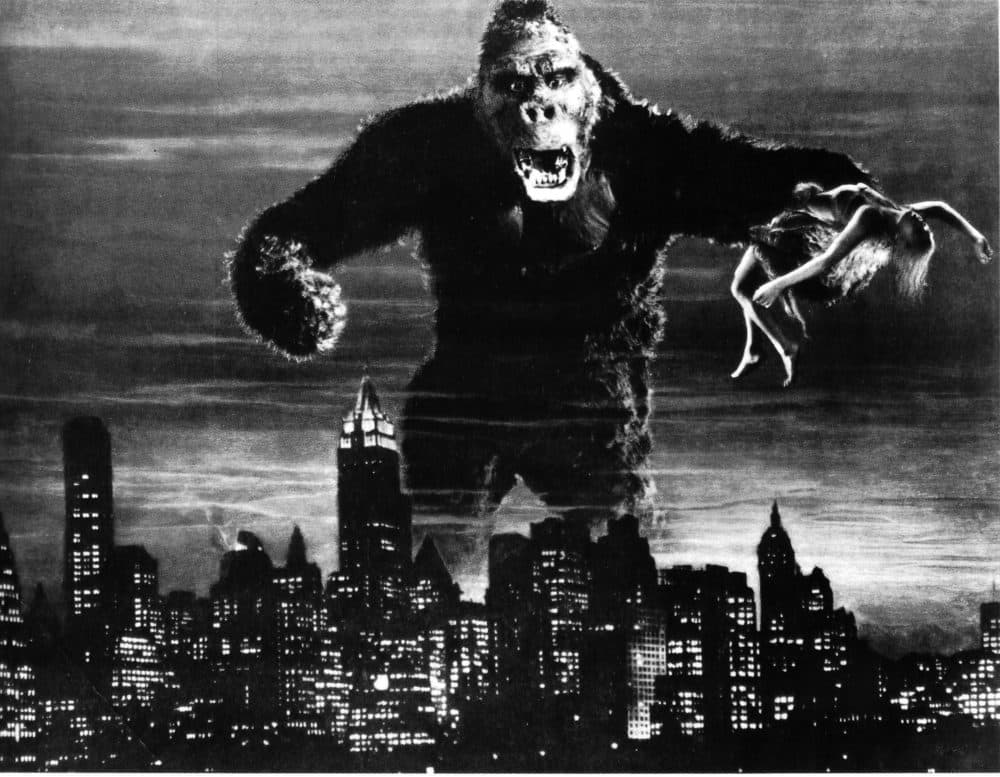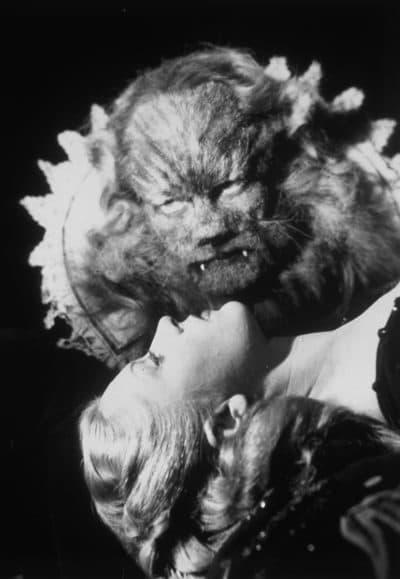Advertisement
At The Brattle, 'Films For Kids Of All Ages' Celebrates The Wonder Of Cinema

When you ask people about their favorite moviegoing experiences, most of the time you’ll hear about a film they went to see when they were a little kid. There’s something magical about being a small person in a big chair, staring up at those giant images in the dark. The screen opens a huge new world of wonder and adventure and to be honest it’s the kind of pure dopamine hit we critics make careers out of chasing, usually in vain. I can still tell you so many details about the rainy night in 1981 when my dad took me to see “Raiders of the Lost Ark” at the old Redstone Theater in Stoneham. (It’s now a Target.) I was terrified out of my mind for the ominous first five minutes until Harrison Ford finally doffed his fedora and broke into that crooked, self-deprecating smirk and I realized I was about to have more fun than I’d had in all my previous six years on the planet.
“For Kids of All Ages: The National Society of Film Critics on Children’s Movies” is a marvelous new compendium of essays by the country’s biggest cinema brains, riffing on all aspects and angles of films for and featuring kids. Edited by Boston Globe correspondent Peter Keough, the expansive collection includes memory pieces, genre surveys, history lessons and even a few unexpected Freudian explications.
A bunch of wizened professionals and pointy-headed academics writing about children’s movies might at first sound counterintuitive, but as Keough notes in his introduction, “for better and worse, film critics are the most childish people you’ll meet.” (Having sat in Boston screening rooms with Peter for the past 20 years, I can attest that this is an observation he makes from personal experience.) But kidding aside, Keough’s correct when he writes that “the fundamental response of even the most hard-core film critic is that of a kid who has just fallen under cinema’s spell.” Deep down inside, we’re all still like little me trying not to wet my pants while watching “Raiders.”

Keough served for 24 years as film editor of the late, lamented Boston Phoenix and the book is packed with contributions from a murderer’s row of local talent and former Phoenix writers, including Time Magazine’s Stephanie Zacharek, Arts Fuse’s Gerald Peary and Dissent’s Charles Taylor. There are also articles by the Boston Herald’s James Verniere and former Herald scribe Carrie Rickey, as well as a reprinting of a singularly lovely appreciation of the original 1933 “King Kong” by longtime Boston Globe critic Jay Carr, who passed away in 2014.
In celebration of the book’s release, a wonderful repertory series kicks off on Christmas Day at the Brattle Theatre, spotlighting 10 of the films featured in its pages. From “The Wizard of Oz” to “Eighth Grade,” it’s the kind of eclectic mix of movies we’ve come to expect from the Brattle, finding room for Michael Powell and Emeric Pressburger’s gobsmackingly beautiful “The Red Shoes” as well as Joseph Losey’s seldom-screened counterculture favorite “The Boy With Green Hair.” The week between Christmas and New Year’s is peak time for family moviegoing, and these are some fine alternatives to chaotic multiplexes if you don’t feel like being disappointed by the new “Star Wars” or subjecting your loved ones to “Cats.”
I saw “The Wizard of Oz” on the big screen again last summer at the Coolidge and wondered all over again if there’s ever been a more perfect Hollywood production. It’s an ideal introduction to cinema for younger viewers as the dingy black-and-white beginning opens up into a blindingly vibrant alternate universe full of reassuringly familiar faces alongside candy-colored singalongs and pure, screaming nightmare fuel. (As long as I’ve been reading him, Keough’s never missed a chance to point out in print the trauma those winged monkeys caused him as a boy.) As kind of a sicko kid, I always adored how scary “The Wizard of Oz” gets at times, though it did take a couple tries for my nephew to make it past “How about a little fire, Scarecrow?” without fleeing from the room.
But this kind of experience is also important. In an autobiographical essay that begins the book, Gerald Peary argues that children “need to be confronted with Snow White’s evil queen and the deaths of Old Yeller and Bambi’s mother. They need to discover through art that the world is not always a just, trustworthy place.” To that end, Charles Taylor quite movingly writes about the Brattle series’ most curious entry, the kitschy 1970 disaster movie “Airport.” This G-rated “Grand Hotel” in the sky was the first film he saw in a theater that wasn’t a cartoon or a musical, and the stark financial panic of the suicidal character played by Van Heflin struck a chord deep in Taylor, introducing him to a world of adult concerns that hit closer to home than the escapist entertainment he was used to watching on the big screen.

I never did see the original “Airport” (I always confuse it with the 1974 sequel starring Karen Black as the shrill stewardess in which Helen Reddy played a singing nun), but I empathize with how cheeseball disaster pictures can leave a mark. One of my most traumatizing movie experiences was being way too young to watch “The Poseidon Adventure” on television one afternoon and almost four decades later I still haven’t emotionally recovered from the climax in which Gene Hackman’s heroic preacher curses God before sacrificing himself to save his fellow passengers. That movie was a lot.
The highlight of the repertory series and the book’s MVP is the eighth wonder of the world himself, “King Kong.” Cleverly programmed by the Brattle as a double feature with Jean Cocteau’s 1946 “Beauty and the Beast,” Merian C. Cooper and Ernest B. Schoedsack’s 1933 classic keeps coming up in these pages, as befitting a formative film achievement that set a standard for adventure movies that remains unmatched some 86 years later, though filmmakers from Dino De Laurentiis to Peter Jackson have gone down in flames trying. (I watched it again last week and can report that the movie still rocks.)
James Verniere writes eloquently about the tactile, bristling quality of the stop-motion animation, which when replicated by computers in Jackson’s 2005 remake “loses the evocative strangeness and power of the dreamworld original.” Keough keenly compares it to Cocteau’s “Beauty and the Beast” (along with Disney’s dual retellings of the tale as old as time) getting pretty heady with the Freudian implications. But Jay Carr finally sums up why this oddly sympathetic ape has lingered for so long in the minds and memories of moviegoers young and old. “The big guy wasn’t really a monster. He was a fool for love.” That’s the kind of story that stays with you.
“For Kids of All Ages: The National Society of Film Critics on Children’s Movies” is now in bookstores. “Films for Kids of All Ages” runs at the Brattle Theatre from Wednesday, Dec. 25 through Monday, Dec. 30.
